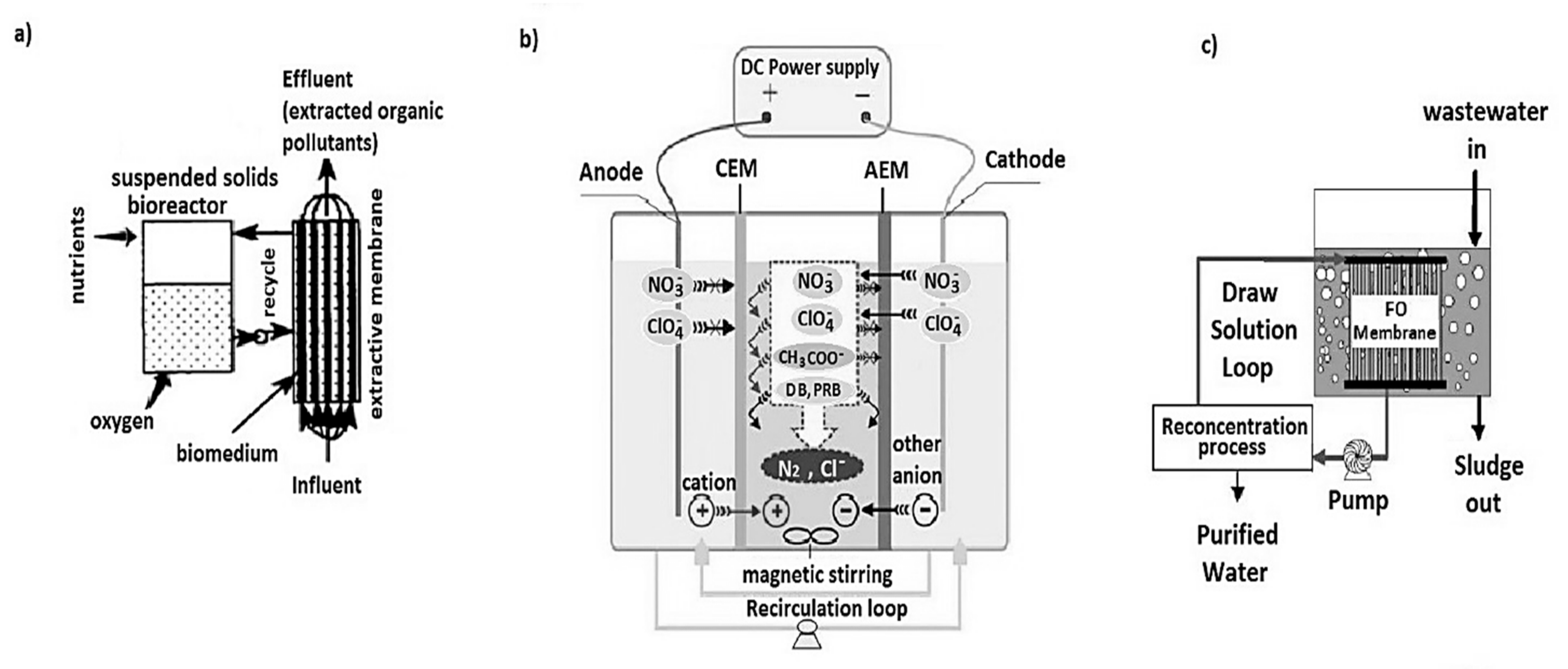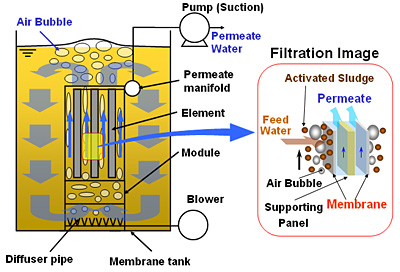How Membrane Layer Bioreactors Are Revolutionizing Water Filtration Equipments
The emergence of membrane layer bioreactors (MBRs) stands for a considerable innovation in the area of water filtration, combining biological therapy processes with innovative membrane layer filtering modern technologies. As global water deficiency heightens, the duty of MBRs in helping with potable water reuse and sustainable water administration comes to be increasingly important.
Overview of Membrane Bioreactors
Membrane layer bioreactors (MBRs) stand for a significant development in water purification technology, as they combine biological therapy procedures with membrane layer filtering. This combination enhances the efficiency of wastewater therapy by making use of microbes to break down organic pollutants while concurrently using semi-permeable membrane layers to different treated water from put on hold microorganisms and solids.
The MBR system normally includes an organic reactor where the microbial populace metabolizes pollutants, followed by a membrane layer filtration device that keeps biomass and permits only tidy water to go through. This twin performance results in higher effluent high quality compared to traditional treatment methods. MBRs can be run in both set and continual circulation settings, offering adaptability in design and application.
In Addition, MBRs are characterized by their small footprint, making them appropriate for urban setups with area restrictions. Membrane Bioreactor. They likewise enable the recuperation of water for reuse, thus adding to water sustainability efforts. While MBR innovation has actually gained popularity in metropolitan and industrial applications, its functional complexities and energy needs necessitate cautious consideration during implementation. Overall, MBRs go to the center of enhancing water treatment effectiveness and quality, showcasing the capacity for cutting-edge options in environmental management.
Advantages of MBR Innovation
The integration of biological treatment with membrane filtering offers various benefits for water purification procedures. Among the primary advantages of Membrane layer Bioreactor (MBR) modern technology is its ability to effectively get rid of both organic and not natural pollutants, causing high-quality effluent. The membranes function as a physical obstacle, preventing put on hold solids and microorganisms from going through, which boosts the overall security and integrity of treated water.
In addition, MBR systems call for a smaller sized footprint contrasted to conventional treatment approaches, permitting much more effective space usage. This small layout is particularly helpful in city settings where land is restricted. MBRs likewise demonstrate operational versatility, fitting differing influent top qualities and flow rates without significant performance deterioration.
Moreover, the process uses improved nutrient elimination capabilities, particularly for nitrogen and phosphorus, which are essential for preventing eutrophication in getting waters. The lowered sludge manufacturing linked with MBR modern technology also translates to lower disposal prices, making it an affordable service over time - Membrane Bioreactor. Overall, the benefits of MBR modern technology setting it as a leading option for lasting and ingenious water purification systems, resolving both ecological and economic problems
Applications in Water Filtration
Applications of Membrane Bioreactor (MBR) modern technology in water filtration are impactful and varied, dealing with various therapy needs throughout several sectors. MBRs properly integrate organic treatment procedures with membrane filtration, making them excellent for community wastewater treatment, commercial effluent management, and also drinkable water reuse campaigns.
In municipal settings, MBRs are progressively used to boost the quality of treated wastewater, allowing for compliance with rigid discharge laws and promoting the recycling of water for irrigation and non-potable uses. Their compact design also makes them suitable for urban environments where space is limited.
Industrially, MBR technology is utilized to treat process water and wastewater, particularly in sectors such as food and drink, drugs, and fabrics. By properly getting rid of impurities and put on hold solids, MBRs assist markets reduce environmental impacts while recovering valuable sources from wastewater streams.
In Addition, MBRs are obtaining grip in decentralized water treatment applications, where small-scale systems can be released in remote locations or establishing he said regions. This flexibility makes it possible for areas to accomplish lasting water management options, enhancing accessibility to tidy water while minimizing reliance on traditional treatment methods.
Situation Studies and Success Stories

In one more instance, a fabric manufacturing center in Bangladesh embraced MBR innovation to address its wastewater obstacles. The system minimized chemical oxygen demand (COD) levels from 1,200 mg/L to less than 100 mg/L, thus fulfilling governing requirements and significantly lessening ecological effect.
The College of Cape Town's MBR installation has actually proven efficient in treating greywater for non-potable reuse moved here on university. This task not only conserves safe and clean water however additionally functions as an instructional version for lasting methods.
Furthermore, a seafood handling plant in Norway used MBR innovation to treat effluents having high degrees of raw material, achieving over 90% pollutant elimination. These study emphasize MBR innovation's flexibility and its vital role in boosting water top quality across varied applications.
Future of Water Therapy Solutions
As international water scarcity and contamination obstacles magnify, ingenious water treatment remedies are coming to be increasingly vital to guarantee lasting access to tidy water. The future of water therapy depends on the integration of advanced technologies that improve the performance and performance of purification procedures. Membrane bioreactors (MBRs) go to the center of this development, incorporating biological therapy with membrane filtering to create top quality effluent appropriate for numerous applications.

Emerging trends such as source recuperation from wastewater, including nutrients and energy, will certainly better change therapy centers right into eco-friendly centers. Improvements in nanotechnology and membrane layer materials guarantee enhanced efficiency and longevity of purification systems.

Verdict
Finally, membrane layer bioreactors represent a substantial improvement in water filtration innovations, properly incorporating biological treatment with sophisticated membrane layer filtering. The countless advantages, including boosted effluent top quality and lowered spatial demands, make MBRs specifically ideal for city applications. Their function in drinkable water reuse and lasting water management highlights their relevance in resolving international water deficiency obstacles. Proceeded research and advancement will even more boost the efficiency and adoption of MBR technology, ensuring a resistant future for water treatment solutions.
The introduction of membrane bioreactors (MBRs) represents a substantial innovation in the area of water filtration, combining biological therapy processes with advanced membrane layer filtration technologies. As international water scarcity increases, the role of MBRs in helping with drinkable water reuse and lasting water administration ends up being significantly essential. They additionally make it possible for the recuperation of water for reuse, hence adding to water sustainability initiatives.As global water deficiency and contamination obstacles increase, innovative water treatment solutions are coming to be increasingly crucial to ensure sustainable accessibility to clean water. Their function in drinkable water reuse and sustainable water administration highlights their significance in addressing worldwide water shortage challenges.